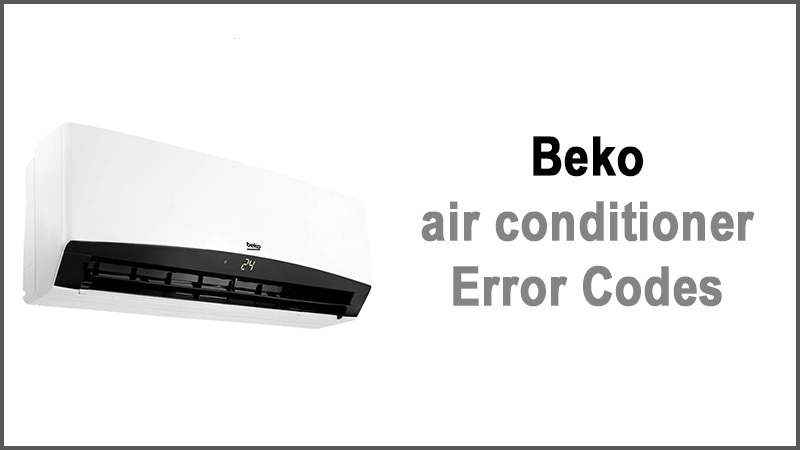Air conditioners, like the ones offered by the leading brand Beko, have become indispensable in our lives, particularly during sweltering summer days. Beko’s reputation for reliable, technologically advanced, and energy-efficient air conditioning units is well-deserved. Nevertheless, even these high-quality machines are not immune to occasional glitches, which are typically signaled via specific error codes. This exhaustive analysis will illuminate the meanings of various Beko air conditioner error codes and suggest possible corrective actions.
Beko’s air conditioners feature an inbuilt self-diagnostic system to detect malfunctions, displaying error codes either on the unit’s panel or remote control. Understanding these codes allows users to troubleshoot issues without immediate professional intervention, saving both time and potential service costs.
Interpreting Beko Air Conditioner Error Codes and Possible Fixes
- Error Code E1: This represents a potential problem with the coil temperature sensor, often due to a disconnection or short circuit. The corrective action involves inspecting the sensor’s connection and verifying its proper operation.
- Error Code E2: This error code signifies an indoor temperature sensor failure, typically caused by a disconnection or short circuit. The remediation follows the same path as E1, with the sensor connection and operation needing verification.
- Error Code E3: This code refers to a high-pressure protection malfunction. If the system is overfilled or the air filter is obstructed, this error might arise. The solution could involve cleaning the air filter or enlisting professional help to check the refrigerant level.
- Error Code E4: This signifies a low-pressure protection malfunction. If the air conditioner has a refrigerant shortage or a clogged filter, this code could be displayed. Clearing the filter or refilling the refrigerant might resolve the issue.
- Error Code E5: This indicates an overcurrent protection malfunction, which occurs when the unit draws more electricity than it’s designed to handle. This could be due to a faulty motor or compressor, usually requiring professional service for resolution.
- Error Code E6: This code points to a communication issue between the indoor and outdoor units, possibly resulting from damaged wiring or a weak connection. Addressing this error entails a thorough check of the wiring and connectors.
- Error Code E7: This code implies a malfunction in the swing motor, responsible for the unit’s louvres’ oscillating motion. A professional might need to replace the malfunctioning motor.
- Error Code E8: This code alerts to an indoor fan motor malfunction. Should this code appear, the fan motor should be inspected and possibly replaced.
- Error Code E9: This suggests a fault with the outdoor temperature sensor. As with E1 and E2, remedying this error necessitates checking the sensor connection and its working condition.
While this analysis offers a starting point for troubleshooting Beko air conditioner error codes, it’s advisable to consult the user manual specific to your model for a more precise understanding. Some issues could lead to further damage if not addressed professionally.
Proactive maintenance, such as regular filter cleaning and system charging, can avert a host of common issues. Swift problem identification and rectification can also significantly enhance the unit’s longevity and performance.
In conclusion, understanding your Beko air conditioner’s error codes is pivotal to maintaining its optimum performance. While some issues are user-serviceable, others warrant professional intervention. Hence, knowing when to enlist professional help is as crucial as comprehending the error codes themselves. Always refer to your user manual, and if in doubt, seek expert advice.
